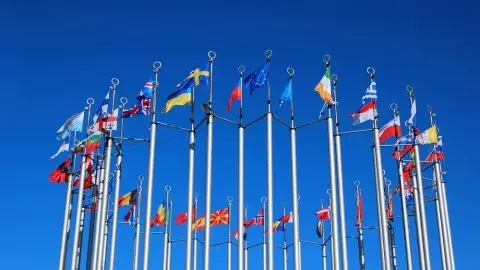ECB preview: Ending QE is not the biggest threat
The Federal Reserve may be President Trump’s “biggest threat” but in the eurozone, tighter ECB policy is way down the list of things to worry about
What a difference six weeks can make
What a difference six weeks can make. If anything, the downside risks to the eurozone’s growth outlook have increased. Stock market turmoil, mixed hard data for the month of August and further tensions in emerging markets have added to what the ECB often calls global risks. At the same time, the never-ending Brexit saga, higher oil prices as well as the swelling conflict on the Italian budget all have the potential to weigh on what has been the eurozone’s biggest trump card so far: solid domestic demand.
Let’s be clear: up to now, the latest developments do not amount to additional risks, nothing has materialised yet and there is no guarantee it ever will. The eurozone recovery is still characterised by solid to strong domestic demand due to higher employment, falling unemployment and low interest rates. Meanwhile, exports have not been affected by trade tensions but rather have benefited from a weak euro and some moderate, though positive, fiscal stimulus.
Still, downside risks to the economic outlook have increased and the inflation outlook remains mixed. Headline inflation has been hovering around 2% in recent months, mainly due to higher energy prices. At the same time, core inflation is still not doing what the ECB expects it to do, namely, pick up. From the minutes of the September meeting, it is clear that the ECB still believes that supply-side constraints should translate into higher core inflation. However, evidence of this actually materialising remains very scarce. In this context, ECB President Mario Draghi will probably have to spend some time during the press conference explaining what he meant by a “relatively vigorous” pick-up in underlying inflation when he spoke at the European Parliament. We don’t expect him to repeat these words.
All too little too early to stop ECB from ending QE
Even though recent developments have been anything but encouraging, the downside risks are simply too minor and too premature for the ECB to alter its chosen path. In our view, it would definitely need a severe growth accident, an escalation of the Italian crisis or trade tensions with tangible consequences on financial markets before the ECB would change its course. The ECB seems willing to look through some market volatility and is determined to end QE by the end of the year (i.e. bring the net asset purchases to zero at the December meeting). Looking beyond the end of QE, the ECB could show more flexibility and willingness to react to slowing growth or the absence of an acceleration in core inflation either by postponing the first rate hike far beyond the summer of 2019 and/or by using the reinvestment period to strengthen forward-guidance.
For next week’s meeting, expect a slightly more dovish ECB president, though one still highly determined to bring QE to an end in December. This is clearly not the biggest threat to the eurozone economy.
This publication has been prepared by ING solely for information purposes irrespective of a particular user's means, financial situation or investment objectives. The information does not constitute investment recommendation, and nor is it investment, legal or tax advice or an offer or solicitation to purchase or sell any financial instrument. Read more
Download
Download article
18 October 2018
In case you missed it: A sense of urgency, perhaps This bundle contains 8 Articles